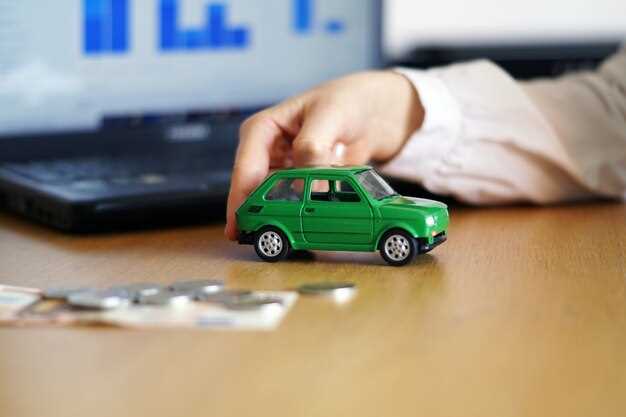How Much Does It Cost to Own a Fiat Long Term?

When considering the purchase of a vehicle, many factors come into play, particularly the cost associated with long-term ownership. A Fiat, known for its compact size and stylish design, attracts a variety of consumers, but understanding the full financial picture is essential before making a commitment. The expenses incurred over time can significantly affect your budget, so it’s crucial to evaluate the long-term costs of owning a Fiat.
Ownership of a Fiat entails various ongoing expenses that go beyond the initial purchase price. These include routine maintenance, insurance premiums, fuel efficiency, and depreciation. While Fiats are often marketed as affordable options, buyers must remain vigilant about the long-term financial implications tied to this brand. By analyzing each of these elements, prospective Fiat owners can make informed decisions that align with their financial goals.
In this article, we will delve into the specific factors that contribute to the long-term cost of owning a Fiat. We will explore aspects such as reliability ratings, common repair costs, and alternative expenses that may arise over time. Understanding these elements will empower consumers to weigh the benefits and drawbacks of Fiat ownership thoroughly, ensuring that they secure not only a vehicle that satisfies their aesthetic and functional needs but also one that fits their long-term financial plans.
Understanding Maintenance and Repair Costs for Fiat Vehicles

When considering the long-term costs of owning a Fiat, one essential aspect is the maintenance and repair expenses associated with these vehicles. Fiat models are generally known for their affordability, but understanding the potential costs can help you make an informed decision.
The average maintenance cost for Fiat vehicles tends to be lower compared to many other brands. Regular services, such as oil changes and tire rotations, are typically cost-effective, allowing owners to maintain their vehicles without breaking the bank. However, some models may require more frequent servicing or specific parts that could increase overall costs.
In terms of repair costs, Fiat vehicles can be both economical and occasionally expensive. Common repairs, such as brake replacements or battery services, can be manageable. However, issues with more complex systems, like the transmission or electrical systems, might result in higher expenses. Access to parts can also influence the repair costs. While many Fiat parts are readily available, some may be harder to find, thus increasing the costs.
Owner reviews and reliability ratings of Fiat models also play a crucial role in understanding long-term expenses. Models with higher reliability ratings often translate to lower maintenance and repair costs over time. It’s important to research specific Fiat models to gauge their typical maintenance costs and potential repair issues.
Lastly, it’s worth noting that warranty coverage can significantly impact overall expenses. Many Fiat vehicles come with substantial warranty packages that cover specific repairs and maintenance services for a period, thereby reducing costs during that time. Understanding these warranty details can provide peace of mind to prospective owners.
Evaluating Fuel Economy and Its Impact on Long-Term Expenses
When considering the long-term costs of ownership for a Fiat, one of the crucial factors to evaluate is fuel economy. Fuel efficiency directly influences the overall ownership expenses, as it affects how much a driver spends on gasoline over time. The efficiency ratings of a Fiat model can significantly differ, impacting the monthly and annual fuel costs.
For instance, a Fiat with higher miles per gallon (MPG) will generally result in lower fuel costs. As fuel prices fluctuate, a vehicle that consumes less fuel can save owners substantial money over the years. Calculating potential long-term fuel expenditures is vital for prospective buyers, particularly in light of rising fuel prices. By analyzing driving habits and average yearly mileage, owners can estimate their fuel expenses for the life of the vehicle.
It’s also essential to consider the vehicle’s maintenance costs associated with fuel economy. Vehicles with better fuel efficiency often come with modern engines and technology that may require less frequent maintenance. This can lead to reduced costs in parts and labor over time, further influencing the total cost of ownership.
In summary, when evaluating a Fiat’s fuel economy, it’s important to factor in how it affects long-term expenses. Higher efficiency not only reduces fuel costs but can also contribute to lower maintenance expenses, making it a key consideration in the overall cost of ownership. Potential Fiat owners should conduct thorough research and calculations to ensure they make informed decisions that align with their financial goals.
Insurance Rates and Resale Value Considerations for Fiat Owners

When it comes to the long-term costs of owning a Fiat, insurance rates and resale value are critical factors that potential owners need to address. Fiats tend to be more affordable vehicles, which often translates to lower insurance premiums compared to luxury or high-performance brands. However, exact rates can vary based on model, age, and individual driving history.
Many Fiat models are considered safe vehicles, with several equipped with advanced safety features that can benefit drivers in terms of insurance discounts. As a prospective owner, it’s advisable to obtain quotes from multiple insurance providers to find the most competitive rate. Moreover, factors such as the Fiat’s engine size, repair costs, and overall reliability can influence premiums. Generally, smaller vehicles with lower repair costs are less expensive to insure, making some Fiat models particularly appealing for budget-conscious buyers.
Resale value is another essential consideration for Fiat owners. Historically, Fiat cars may not hold their value as well as other brands, which is crucial for those planning to sell or trade-in their vehicle in the future. Factors such as vehicle demand, condition, and mileage at the time of sale can affect resale value significantly. While some models appreciate due to their unique styling or niche appeal, others may depreciate quickly. Owners should be mindful of maintenance and care, as a well-maintained Fiat has a better chance of achieving a favorable resale price.
Overall, understanding the interplay between insurance rates and resale value is vital for Fiat owners. While lower initial costs can make Fiat ownership attractive, potential buyers should consider the long-term financial implications to ensure they make an informed decision.



